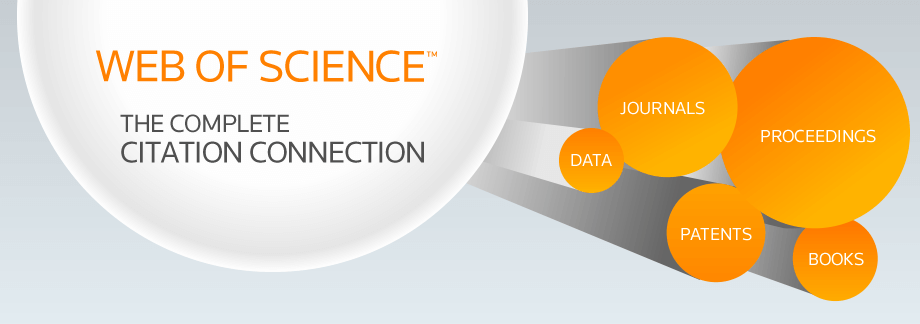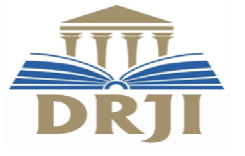INTERNATIONAL JOURNAL OF CREATIVE RESEARCH THOUGHTS - IJCRT (IJCRT.ORG)
International Peer Reviewed & Refereed Journals, Open Access Journal
IJCRT Peer-Reviewed (Refereed) Journal as Per New UGC Rules.
ISSN Approved Journal No: 2320-2882 | Impact factor: 7.97 | ESTD Year: 2013
Call For Paper - Volume 13 | Issue 11 | Month- November 2025
Scholarly open access journals, Peer-reviewed, and Refereed Journals, Impact factor 7.97 (Calculate by google scholar and Semantic Scholar | AI-Powered Research Tool) , Multidisciplinary, Monthly, Indexing in all major database & Metadata, Citation Generator, Digital Object Identifier(CrossRef DOI)
Contact Us Click Here
WhatsApp Contact Click Here
Volume 12 | Issue 6
| IJCRT Journal front page | IJCRT Journal Back Page |
Paper Title: Attitude Of Secondary School Teachers Towards Inclusive Education Of Jajpur District
Publisher Journal Name: IJCRT
Your Paper Publication Details:
Published Paper ID: - IJCRT2406312
Register Paper ID - 263600
Title: ATTITUDE OF SECONDARY SCHOOL TEACHERS TOWARDS INCLUSIVE EDUCATION OF JAJPUR DISTRICT
Author Name(s): Monalisa Panda
Publisher Journal name: IJCRT
Volume: 12
Issue: 6
Pages: c881-c894
Year: June 2024
Downloads: 230
Abstract
Inclusive Education is key to provide equity with Equal opportunities to each and every child in the World. Inclusive Education provides individualized education with the help of appropriate strategies, equipment and support of teachers. Teachers play a very crucial role in order to make inclusive education more fruitful at the grassroots level from inspiring them to take admission in the school to making them self-sufficient by helping them in the field of their difficulties. The present study aims to understand the Attitudes of secondary schools teachers towards inclusive education in the district of Jajpur, Odisha. A sample consists of 60 secondary school teachers in Jajpur district by stratified Random sampling method. The researcher adopted a standardized teacher Attitude Scale toward Inclusive Education by Dr.Vishal Sood and Dr. Arati Ananda .Descriptive survey method was used by the researcher. From The results it was evident that most of the teachers having positive attitude towards inclusive education. There exist no significant difference between the attitude of male and female,rural and urban secondary schools teachers.
Licence: creative commons attribution 4.0
License
Keywords
Attitude Of Secondary School Teachers Towards Inclusive Education Of Jajpur District
License
Paper Title: Unlocking Insights: A Comprehensive Review of Data Science Techniques for Complex Data Analysis
Publisher Journal Name: IJCRT
Your Paper Publication Details:
Published Paper ID: - IJCRT2406311
Register Paper ID - 263570
Title: UNLOCKING INSIGHTS: A COMPREHENSIVE REVIEW OF DATA SCIENCE TECHNIQUES FOR COMPLEX DATA ANALYSIS
Author Name(s): Vasudev Shriwas, Jatin Jaiswal, Nisha Rathore
Publisher Journal name: IJCRT
Volume: 12
Issue: 6
Pages: c874-c880
Year: June 2024
Downloads: 186
Abstract
This review explores data science, focusing on extracting insights from complex data. Data science, at the intersection of statistics, computer science, and AI, provides powerful tools to uncover hidden patterns and trends in large, diverse datasets. The paper discusses data science concepts, including data collection, analysis, and interpretation, emphasizing the importance of data visualization, machine learning algorithms, and statistical techniques in transforming raw data into actionable insights. Additionally, it addresses the challenges and opportunities in processing big data, unstructured data, and real-time data streams in the context of data science research. By consolidating key findings and highlighting emerging trends, this review offers valuable resources for researchers, practitioners, and enthusiasts to understand the methods, tools, and best practices in data science for uncovering insights from complex data. The review aims to investigate the effectiveness of data science and leverage the power of data for informed decision-making and innovation.
Licence: creative commons attribution 4.0
License
Keywords
Computational data science, deep learning, autonomous vehicle, traffic anomaly, data analysis.
License
Paper Title: MAKING INDIA A PARTICIPATORY DEMOCRACY
Publisher Journal Name: IJCRT
Your Paper Publication Details:
Published Paper ID: - IJCRT2406310
Register Paper ID - 263553
Title: MAKING INDIA A PARTICIPATORY DEMOCRACY
Author Name(s): Sudeep Shahane
Publisher Journal name: IJCRT
Volume: 12
Issue: 6
Pages: c868-c873
Year: June 2024
Downloads: 196
Abstract
The concept of participatory democracy has gained immense popularity in recent years, especially in countries like India where governance faces several challenges. This paper delves into the nuances of participatory democracy in the Indian context, analyzing its significance, challenges, and potential strategies for implementation. Through a comprehensive review of existing literature, case studies and policy frameworks, this research explains how participatory democracy can transform governance by empowering citizens as active stakeholders in decision-making processes. By removing structural barriers, promoting civic education, and leveraging technology, India can move towards a more inclusive and responsive democratic framework in which the voices of all citizens are heard and heeded.
Licence: creative commons attribution 4.0
License
Paper Title: A Review Paper on Comprehensive Study of Application of Networking in Different Domain
Publisher Journal Name: IJCRT
Your Paper Publication Details:
Published Paper ID: - IJCRT2406309
Register Paper ID - 263502
Title: A REVIEW PAPER ON COMPREHENSIVE STUDY OF APPLICATION OF NETWORKING IN DIFFERENT DOMAIN
Author Name(s): Nikunj Patel, Himanshu Soni, Mrs. Nisha Rathore
Publisher Journal name: IJCRT
Volume: 12
Issue: 6
Pages: c858-c867
Year: June 2024
Downloads: 162
Abstract
This comprehensive survey delves into the complex landscape of modern information and communication technologies, including cloud computing, the Internet of Things (IoT), software-defined networking (SDN), artificial intelligence (AI), and emerging technologies such as: We are investigating various fields such as. Blockchain service (BaaS). This story unfolds against the backdrop of continuous technological advances and highlights the central role of network technologies in reshaping computing and communications. This study traces the history of computer networking from its beginnings in the ARPANET to the commercialization of the Internet, navigating key developments such as the rise of TCP/IP and the transformative era of cloud computing and his IoT. It carefully examines the challenges and advances inherent in this digital environment and reveals the important interactions of network technologies in different fields. Future Scope describes promising research directions such as cloud security, IoT vulnerabilities, SDN optimization, and integration of new technologies such as blockchain. The focus is on improving security measures, addressing network challenges, and maximizing the potential of AI and cognitive computing in diverse business environments. The study envisions a future where evolving technologies contribute to a more connected, secure and efficient digital environment, and calls on researchers to prioritize innovation, efficiency and security across a range of sectors. Essentially, research environments must be rooted in a commitment to a future of digital transformation that aligns with the needs of connectivity, security, and innovation.
Licence: creative commons attribution 4.0
License
Keywords
cloud security, Internet of Things, network security, Network Functions Virtualization, Secure Socket Layer, Distributed Denial of Service attacks, 5G wireless backhaul networks, Blockchain as a Service, Cloud Radio Access Network, traffic engineering.
License
Paper Title: FeaturesAndChallengeOfNep2020
Publisher Journal Name: IJCRT
Your Paper Publication Details:
Published Paper ID: - IJCRT2406308
Register Paper ID - 263509
Title: FEATURESANDCHALLENGEOFNEP2020
Author Name(s): Shakher chettri
Publisher Journal name: IJCRT
Volume: 12
Issue: 6
Pages: c855-c857
Year: June 2024
Downloads: 358
Abstract
The National Education Policy 2020, which is a transparent attempt to create an efficient, effective and value based education system in India based on as much facts and information as possible, was adopted by the Indian union cabinet on July 29, 2020. It promotes of five plus three plus three plus four school structure, dresses mother language education, and proposes of Higher Education Commission of India (HECI). Holistic, multydisciplinary learning and continued teacher improvement are at the core of this policy. In this article we will focus on the important features and challenges brought to us by NEP 2020
Licence: creative commons attribution 4.0
License
Keywords
Holistic learning, inter disciplinary studies, inclusiveness, technology integration, vocational education.
License
Paper Title: A Brief Discussion on International Terrorism
Publisher Journal Name: IJCRT
Your Paper Publication Details:
Published Paper ID: - IJCRT2406307
Register Paper ID - 263531
Title: A BRIEF DISCUSSION ON INTERNATIONAL TERRORISM
Author Name(s): Firdous Rahaman
Publisher Journal name: IJCRT
Volume: 12
Issue: 6
Pages: c849-c854
Year: June 2024
Downloads: 141
Abstract
The concept of terrorism is a controversial term throughout the world. A person may be a terrorist in front of a person or may be a freedom fighter in front of another person. Terrorism is a systematic activity and also pre-planned. Terrorist has always targeted to the innocent and weak people by spreading violence in civil society. They also involve various anti social activities like smuggling, illegal weapon and black money supply. The main causes of terrorism are ethno-nationalism, discrimination, religious, cultural, ideological and of socio-economic and political. Cyber terrorism, separatist terrorism, state sponsored terrorism, nuclear terrorism, biological terrorism, religious terrorism, narco-terrorism these are the various types of terrorism. The famous international terrorist groups are like Al-qaeda, Taliban, Laskar-e- taiba, hamas, ISIS etc. They have making violence in public place, bombardment, attack by weapon, , kidnapping, plane hijack, car bombing, misuse of internet, use of RDX to blast, human bombing, landmine and bombing in the places where huge gathering like shopping mall, railway station, bus stand etc. At present the terrorism is growing with the help of science and technology and pushes the world to security challenges.
Licence: creative commons attribution 4.0
License
Keywords
Terrorism, features of terrorism, causes of terrorism, types of terrorism, way of terrorism, famous terrorist organisation
License
Paper Title: Indian Bureaucracy As The Steel Frame: Is It a Fact Or a Fiction?
Publisher Journal Name: IJCRT
Your Paper Publication Details:
Published Paper ID: - IJCRT2406306
Register Paper ID - 263516
Title: INDIAN BUREAUCRACY AS THE STEEL FRAME: IS IT A FACT OR A FICTION?
Author Name(s): Rashmi Baro
Publisher Journal name: IJCRT
Volume: 12
Issue: 6
Pages: c845-c848
Year: June 2024
Downloads: 204
Abstract
The concept of Indian bureaucracy as the Steel Frame has been prominent in India since the Colonial times. India's bureaucracy has been instrumental in framing the nation's socio-economic structure since independence. The framers of the Constitution of India recognised the importance of permanent executive body that can provide stability to administration. It is a professional body organized in hierarchical structure to serve the nation impartially. Starting with a brief historical overview, this article critically examines its relevance, strength and challenges to analyse whether the notion of India's bureaucracy as 'The Steel Frame of India' is indeed a fact or merely a fiction. Furthermore, along with strength, weakness and threats associated with bureaucracy this article tries to give a nuanced understanding about Indian civil service, possible bureaucratic reforms and its aspiration towards governance, socio-economic development and democracy.
Licence: creative commons attribution 4.0
License
Keywords
Accountability, Bureaucracy, Democracy, Politicization, Political Executive, Permanent Executive, Administrative Reforms
License
Paper Title: ENVIRONMENTAL ETHICS: STATUS OF AWARENESS TOWARSDS MUNICIPAL SOLID WASTE DISPOSAL IN DELHI NCR FOCUSSING NOIDA
Publisher Journal Name: IJCRT
Your Paper Publication Details:
Published Paper ID: - IJCRT2406305
Register Paper ID - 263564
Title: ENVIRONMENTAL ETHICS: STATUS OF AWARENESS TOWARSDS MUNICIPAL SOLID WASTE DISPOSAL IN DELHI NCR FOCUSSING NOIDA
Author Name(s): Anushree Khaidem, Dr Kartikeya Sukhala
Publisher Journal name: IJCRT
Volume: 12
Issue: 6
Pages: c832-c844
Year: June 2024
Downloads: 163
Abstract
Municipal solid waste (MSW) disposal is a pressing concern in the densely populated Delhi National Capital Region (NCR), where rapid urbanization has compounded waste management challenges. Understanding current disposal practices and their associated issues is crucial for developing effective waste management strategies. Delhi NCR generates an estimated 10,000 to 12,000 metric tons of MSW daily, comprising various types such as organic waste, plastic, paper, glass, and metal. Several challenges hinder efficient MSW disposal, including inadequate infrastructure, poor waste segregation practices, limited public awareness, and weak enforcement of regulations. Consequently, a large portion of waste ends up in landfills, causing environmental pollution and health hazards. Addressing these challenges necessitates a multi-faceted approach. This includes investing in waste management infrastructure, promoting waste segregation at the source, implementing recycling and composting initiatives, and raising public awareness about proper waste disposal. Collaboration among government agencies, private sector stakeholders, civil society organizations, and the community is essential for creating sustainable waste management solutions in Delhi NCR. By adopting integrated approaches and fostering a culture of environmental responsibility, Delhi NCR can aspire to a cleaner, healthier, and more sustainable future for its residents. The findings from two survey-based studies provide further insights into MSW management practices in the region. The first study, involving 40 MSW workers and waste pickers, revealed that 25% of respondents faced challenges related to inadequate infrastructure, insufficient protective gear, and health risks. Many highlighted the need for better training and awareness programs to improve waste management efficiency and worker safety. The second study surveyed 60 stakeholders, revealing that 45% were concerned about the lack of comprehensive waste segregation at the source, which hampers recycling efforts and exacerbates environmental pollution. Respondents emphasized the importance of community engagement, technological advancements, and policy reforms to promote sustainable waste management practices. These survey results highlight the urgent need for holistic strategies to tackle MSW challenges in Delhi NCR. Collaborative efforts among policymakers, waste management professionals, and the community are vital to implementing effective solutions that prioritize environmental sustainability, public health, and social welfare.
Licence: creative commons attribution 4.0
License
Keywords
Municipal Solid Waste, Delhi NCR, Waste Management, Waste Segregation, Recycling, Composting, Environmental Pollution, Infrastructure, Public Awareness, Health Hazards, Policy Reforms, Sustainable Practices
License
Paper Title: A Comprehensive Review On Herbs, Active Pharmaceutical Ingredients, Novel Drug Delivery Systems, And Advanced Technologies For Wound Healing And Antiseptic Activity
Publisher Journal Name: IJCRT
Your Paper Publication Details:
Published Paper ID: - IJCRT2406304
Register Paper ID - 259667
Title: A COMPREHENSIVE REVIEW ON HERBS, ACTIVE PHARMACEUTICAL INGREDIENTS, NOVEL DRUG DELIVERY SYSTEMS, AND ADVANCED TECHNOLOGIES FOR WOUND HEALING AND ANTISEPTIC ACTIVITY
Author Name(s): Madhavi Surve, Shrutika Patil, Shruti Patil, Sakshi Jadhav,, Gaurav Chougule
Publisher Journal name: IJCRT
Volume: 12
Issue: 6
Pages: c810-c831
Year: June 2024
Downloads: 164
Abstract
Wounds are the damage or breakage on skin surface which are the major causes of bacterial Infection. Wounds can be recognized by their severity of infection during various phases. The main cause of bacterial infection is due to inflammation on the wound which causes continuation of various bacterial species on it. From last few years, 50% of the deaths and public health concerns are due to Infections. Hence to overcome such health problems, Wound healing is necessary. It not only heals the wound but also helps in termination of bacterial species causing severe infections. The Healing action adapts various biological phases and rely on some factors like wound size, location, depth, age etc. The Important mode of action of wound healing is the 'Anti-Bacterial'/ 'Anti- Microbial' activity which ruptures the structures of bacterial species leading to fasten the healing of wounds. Now-a-days wound healing has implied usage of various biodegradable and biocompatible materials which are FDA approved. Numerous technologies have come into existence for wound healing from which Dermal Patch Technology is the quickest, Easiest and safest technique for wound healing. The paper reviews information mainly from peer-reviewed literature and other publicly available sources.
Licence: creative commons attribution 4.0
License
Keywords
Haemostasis; Inflammation; Wound healing;
License
Paper Title: Talent-Natural or Acquired? Theoretical Considerations and Inferences for Talent Management
Publisher Journal Name: IJCRT
Your Paper Publication Details:
Published Paper ID: - IJCRT2406303
Register Paper ID - 250108
Title: TALENT-NATURAL OR ACQUIRED? THEORETICAL CONSIDERATIONS AND INFERENCES FOR TALENT MANAGEMENT
Author Name(s): Dr.Chinthireddy Prakash
Publisher Journal name: IJCRT
Volume: 12
Issue: 6
Pages: c806-c809
Year: June 2024
Downloads: 194
Abstract
Meyers et al's paper presents a comprehensive and convincing overview of the differing perspectives on talent as innate versus acquired and presents a continuum reflecting the various interpretations of these perspectives and some implications of an organisation's position on this continuum on the design of talent management practices. This issue is particularly pertinent given the evidence that organizations are increasingly willing to pay a premium to attract and retain those they perceive to be highly talented individuals (Ang, Slaghter and Ng, 2002; Goldsmith and Veum, 2002). This is underpinned by the implicit assumption that talented individuals produce outstanding performance that helps firms achieve a competitive advantage. We agree with the general premise of the paper. Therefore, rather than rehearse Meyers and her colleagues' arguments, we focus on expanding on the ideas in the paper. In particular, we address the issue of exclusivity of talent and consider the role of context and its implications on talented individuals' performance.
Licence: creative commons attribution 4.0
License
Keywords
Talent and performance,talent management systems,organizational contexts
License
Paper Title: "Experience the Healing Power of Nature with Giloy Sol Gel!"
Publisher Journal Name: IJCRT
Your Paper Publication Details:
Published Paper ID: - IJCRT2406302
Register Paper ID - 263359
Title: "EXPERIENCE THE HEALING POWER OF NATURE WITH GILOY SOL GEL!"
Author Name(s): Munna G. Shaikh., Pallavi S. Kandalkar, Angad Bhaskar Newre
Publisher Journal name: IJCRT
Volume: 12
Issue: 6
Pages: c786-c805
Year: June 2024
Downloads: 180
Abstract
This study aimed to develop a novel sol-gel formulation of Giloy (Tinospora cordifolia) for topical application, leveraging its therapeutic potential in dermatological conditions. The sol-gel system offers advantages such as improved stability, enhanced bioavailability, and prolonged release of active compounds. Various formulations were prepared and characterized for rheological properties, drug content, pH, and spreadability. Additionally, in vitro release studies were conducted to assess the drug release profile. The optimized formulation demonstrated desirable rheological properties, satisfactory drug content, and appropriate pH for skin application. Moreover, the in vitro release study revealed sustained release characteristics, indicating its potential for prolonged therapeutic action. Further in vivo studies are warranted to evaluate the efficacy and safety of the developed Giloy sol-gel formulation for topical use. This research signifies a promising approach in utilizing natural remedies for dermatological applications, contributing to the development of effective and safe therapeutic options. This study presents the synthesis and characterization of sol-gel nanoparticles derived from Giloy (Tinospora cordifolia), a medicinal plant known for its diverse pharmacological properties. The sol-gel method offers a versatile approach for producing nanoparticles with controlled size and morphology. The synthesized Giloy sol-gel nanoparticles were characterized using various techniques such as scanning electron microscopy (SEM), transmission electron microscopy (TEM), X-ray diffraction (XRD), and Fourier-transform infrared spectroscopy (FTIR) to investigate their structural, morphological, and chemical properties. Furthermore, the potential biomedical applications of these nanoparticles, including their antimicrobial, antioxidant, and anti-inflammatory properties, were evaluated. The findings suggest that Giloy sol-gel nanoparticles hold promise for various biomedical applications, ranging from drug delivery systems to wound healing and tissue engineering. Further studies are warranted to explore their full therapeutic potential and optimize their formulation for clinical use.
Licence: creative commons attribution 4.0
License
Keywords
Giloy (Tinospora cordifolia), Biocompatible materials, Nanoparticles, Holistic Healing, Rejuvenation, Herbal Therapy.
License
Paper Title: Conservative treatment options in Acute Medial Tibial Stress Syndrome- A Narrative Review
Publisher Journal Name: IJCRT
Your Paper Publication Details:
Published Paper ID: - IJCRT2406301
Register Paper ID - 263311
Title: CONSERVATIVE TREATMENT OPTIONS IN ACUTE MEDIAL TIBIAL STRESS SYNDROME- A NARRATIVE REVIEW
Author Name(s): Sriraghunath. S, Dr Annie Thomas
Publisher Journal name: IJCRT
Volume: 12
Issue: 6
Pages: c779-c785
Year: June 2024
Downloads: 150
Abstract
Medial Tibial Stress Syndrome (MTSS) is a chronic lower-limb injury that effects a large population of athletes and exercisers. MTSS, commonly known as ''shin splints,'' is one of the most common causes of exertional leg pain in athletes. It is one of the most common overuse issues in runners and the community, affecting almost 35% of the athletic population. Overuse injuries like MTSS can impact up to 70% of runners in a year. Many risk factors are associated with MTSS, and lower extremity performance may become altered in athletes suffering from prior symptoms, potentially increasing risk of future injury. Although often not serious, it can be quite disabling and progress to more serious complications if not treated properly. There is no definitive knowledge on what causes this injury, making prevention and treatment difficult. Often, the cause of MTSS is multi-factorial and involves training errors and various biomechanical abnormalities. Few advances have been made in the treatment of MTSS over the last few decades. Current treatment options are mostly based on expert opinion and clinical experience. The purpose of this article is to review published literature regarding conservative treatment options for Acute MTSS and provide recommendations for physiotherapists and sports medicine clinicians for improved and faster treatment outcomes.
Licence: creative commons attribution 4.0
License
Keywords
Medial Tibial Stress Syndrome (MTSS), conservative management, exertional leg pain, runners, shin pain
License
Paper Title: Mahilao ke virudh hinsa- karan aur prabhav
Publisher Journal Name: IJCRT
Your Paper Publication Details:
Published Paper ID: - IJCRT2406300
Register Paper ID - 263362
Title: MAHILAO KE VIRUDH HINSA- KARAN AUR PRABHAV
Author Name(s): Anju Rani, Dr. Deepika Deswal
Publisher Journal name: IJCRT
Volume: 12
Issue: 6
Pages: c770-c778
Year: June 2024
Downloads: 272
Abstract
Mahilao ke virudh hinsa- karan aur prabhav
Licence: creative commons attribution 4.0
License
Keywords
Mahilao ke virudh hinsa- karan aur prabhav
License
Paper Title: Divyang Mahilao Ki Siksha Va Punarvarsh
Publisher Journal Name: IJCRT
Your Paper Publication Details:
Published Paper ID: - IJCRT2406299
Register Paper ID - 263367
Title: DIVYANG MAHILAO KI SIKSHA VA PUNARVARSH
Author Name(s): Ajeet Singh Patel, Dr.Aabha Shrivastav
Publisher Journal name: IJCRT
Volume: 12
Issue: 6
Pages: c761-c769
Year: June 2024
Downloads: 225
Abstract
Divyang Mahilao Ki Siksha Va Punarvarsh
Licence: creative commons attribution 4.0
License
Keywords
Divyang Mahilao Ki Siksha Va Punarvarsh
License
Paper Title: A COMPREHENSIVE STUDY ON FMCG STOCKS IN INDIA
Publisher Journal Name: IJCRT
Your Paper Publication Details:
Published Paper ID: - IJCRT2406298
Register Paper ID - 261836
Title: A COMPREHENSIVE STUDY ON FMCG STOCKS IN INDIA
Author Name(s): RAHUL SHARMA
Publisher Journal name: IJCRT
Volume: 12
Issue: 6
Pages: c730-c760
Year: June 2024
Downloads: 189
Abstract
This paper explores the performance, patterns, and factors of fast-moving consumer goods (FMCG) stocks in India, an important market for the country's economy. It looks at past stock performance, important market drivers, and the impact of macroeconomic variables, consumer behaviour, and regulatory changes using both quantitative and qualitative approaches. In addition, the study assesses investment approaches, pinpoints dangers, and projects industry prospects going forward. For investors, legislators, and industry stakeholders, the findings offer practical insights that support well-informed decision-making and strategic planning. This thorough research, which highlights the sector's opportunities and difficulties, improves awareness of India's dynamic FMCG market.
Licence: creative commons attribution 4.0
License
Keywords
FMCG sector, Indian economy, Stock performance, Market trends, Quantitative research,
License
Paper Title: Lip Reading Using Cnn And Bi-Lstm
Publisher Journal Name: IJCRT
Your Paper Publication Details:
Published Paper ID: - IJCRT2406297
Register Paper ID - 262834
Title: LIP READING USING CNN AND BI-LSTM
Author Name(s): Divyaprabha, Sagar Sonale T V, Manu G, Gokul Chandra Reddy, Manoj Kumar M O
Publisher Journal name: IJCRT
Volume: 12
Issue: 6
Pages: c721-c729
Year: June 2024
Downloads: 195
Abstract
The CTC-CNN-Bidirectional LSTM-based Lip Reading System seeks to increase speech recognition accuracy. To more accurately identify spoken words from lip movements, this system integrates Convolutional 3D Neural Networks with Bidirectional Long Short-Term Memory (LSTM) architecture and Connectionist Temporal Classification (CTC). Through the integration of 3D CNN and Bidirectional LSTM, lip dynamics' temporal and spatial properties are efficiently captured. On the test dataset, the system attains a word error rate of just 16.6% and a character error rate of 6.2% after 92 epochs. In real-world settings, this technology could greatly improve user interfaces, safety, and communication for the hard of hearing
Licence: creative commons attribution 4.0
License
Keywords
Audio-Visual Processing, Feature Extraction, Lipnet, Lipreading, Robustness, Deep Learning
License
Paper Title: Mitigation and adaptation of climate change disaster
Publisher Journal Name: IJCRT
Your Paper Publication Details:
Published Paper ID: - IJCRT2406296
Register Paper ID - 263576
Title: MITIGATION AND ADAPTATION OF CLIMATE CHANGE DISASTER
Author Name(s): Dr.Anuradha Lakra
Publisher Journal name: IJCRT
Volume: 12
Issue: 6
Pages: c714-c720
Year: June 2024
Downloads: 132
Abstract
Climate change is a long-term change in the statistical distribution of weather patterns appropriate lover time periods ranging from decades to millions of years. It can also be interpreted as a shift in average weather conditions or a change in the distribution of average weather events. Climate change can occur locally, in specific regions, or across the entire planet's surface. This change is characterized by at least four characteristics:, first rising global temperature, second rising sea levels, third extreme weather conditions and others, and four changes in rainfall patterns. Climate change is currently marked by an increase in the frequency of hydrometeorologicalDisasters, such as decreased water availability and or even excess water discharge at other times, as well as forest and land fires. Based on future climate change projections, these Hydrometeorological disasters have the potential to worsen threathening the resilience of water, food, and energy resources. Climate change is frequently associated with disaster due to an increase in hydrometeorological events over time. However, climate change is not the only cause. The disaster impacts are the results and indicators of more complex issues caused by larger environmental, social changes, and economic changes. These various disaster challenges in the future will necessitate earlier anticipatory preparations so that India and the rest of the world can adapt and mitigate appropriately. Keywords: mitigation,adaptation,climate change, disaster,weather,hydrometeorological Introduction Climate change presents one of the most pressing challenges of our time, manifesting through rising global temperatures, extreme weather events, and environmental degradation. Mitigation and adaptation are two complementary approaches aimed at addressing this crisis, albeit from different angles. Mitigation focuses on reducing greenhouse gas emissions to curb the pace and magnitude of climate change, while adaptation seeks to minimize its impacts and build resilience to its effects. Both are essential components of a comprehensive strategy to tackle climate change disaster.Mitigation efforts center around reducing the emission of greenhouse gases, primarily carbon dioxide, methane, and nitrous oxide, which trap heat in the Earth's atmosphere, leading to global warming. This involves transitioning from fossil fuels to renewable energy sources such as solar, wind, and hydroelectric power, as well as improving energy efficiency in sectors like transportation, industry, and agriculture. Additionally, reforestation and afforestation initiatives play a crucial role in mitigating climate change by absorbing carbon dioxide from the atmosphere through photosynthesis.However, even with aggressive mitigation measures, some level of climate change is already locked in due to past emissions and the inertia of the Earth's climate system. This necessitates adaptation strategies to cope with the impacts that are already occurring and will continue to worsen in the coming decades. Adaptation encompasses a wide range of actions, including infrastructure upgrades to withstand extreme weather events, changes in land use planning to reduce vulnerability to floods and sea-level rise, and the development of early warning systems for heatwaves, hurricanes, and other climate-related disasters.One key aspect of adaptation is ensuring that vulnerable communities, particularly those in low-income countries and coastal regions, have the resources and capacity to cope with climate impacts. This includes providing access to clean water and sanitation, improving agricultural practices to withstand droughts and changing weather patterns, and implementing social safety nets to support those displaced by climate-related disasters.Furthermore, adaptation strategies must be integrated into broader development planning to ensure sustainability and resilience in the face of a changing climate. This involves mainstreaming climate considerations into policies and investments across sectors such as health, education, and economic development. For example, building climate-resilient schools and hospitals not only protects these critical infrastructure assets but also ensures continuity of essential services during extreme weather events.An important aspect of both mitigation and adaptation is the need for international cooperation and coordination. Climate change is a global problem that requires a collective response, as greenhouse gas emissions from one country can affect the climate and livelihoods of people halfway around the world. The Paris Agreement, adopted in 2015, represents a landmark framework for international cooperation on climate action, with nearly 200 countries committing to reducing their emissions and enhancing their resilience to climate impacts.However, while mitigation and adaptation are essential strategies for addressing climate change, they are not without challenges. One major obstacle is the political and economic interests that often prioritize short-term gains over long-term sustainability. Fossil fuel industries, for example, have significant influence over government policies and may resist efforts to transition to renewable energy sources. Similarly, funding for adaptation measures in developing countries is often inadequate, leaving vulnerable communities without the resources they need to cope with climate impacts.Another challenge is the uncertainty surrounding the future trajectory of climate change and its impacts. While scientific evidence overwhelmingly supports the reality of human-induced climate change, the exact timing and magnitude of its effects remain uncertain. This uncertainty complicates decision-making processes for policymakers and planners, who must weigh the potential risks and benefits of different adaptation and mitigation strategies.Despite these challenges, there is reason for optimism. Advances in technology and innovation are driving down the cost of renewable energy and making it increasingly competitive with fossil fuels. Public awareness of the urgency of climate action is also growing, with grassroots movements demanding more ambitious policies and investments to address the crisis. By harnessing the power of innovation, collaboration, and political will, we can mitigate the worst impacts of climate change and build a more sustainable and resilient future for generations to come. Climate change presents one of the most pressing challenges of our time, manifesting through rising global temperatures, extreme weather events, and environmental degradation. Mitigation and adaptation are two complementary approaches aimed at addressing this crisis, albeit from different angles. Mitigation focuses on reducing greenhouse gas emissions to curb the pace and magnitude of climate change, while adaptation seeks to minimize its impacts and build resilience to its effects. Both are essential components of a comprehensive strategy to tackle climate change disaster.Mitigation efforts center around reducing the emission of greenhouse gases, primarily carbon dioxide, methane, and nitrous oxide, which trap heat in the Earth's atmosphere, leading to global warming. This involves transitioning from fossil fuels to renewable energy sources such as solar, wind, and hydroelectric power, as well as improving energy efficiency in sectors like transportation, industry, and agriculture. Additionally, reforestation and afforestation initiatives play a crucial role in mitigating climate change by absorbing carbon dioxide from the atmosphere through photosynthesis.However, even with aggressive mitigation measures, some level of climate change is already locked in due to past emissions and the inertia of the Earth's climate system. This necessitates adaptation strategies to cope with the impacts that are already occurring and will continue to worsen in the coming decades. Adaptation encompasses a wide range of actions, including infrastructure upgrades to withstand extreme weather events, changes in land use planning to reduce vulnerability to floods and sea-level rise, and the development of early warning systems for heatwaves, hurricanes, and other climate-related disasters.One key aspect of adaptation is ensuring that vulnerable communities, particularly those in low-income countries and coastal regions, have the resources and capacity to cope with climate impacts. This includes providing access to clean water and sanitation, improving agricultural practices to withstand droughts and changing weather patterns, and implementing social safety nets to support those displaced by climate-related disasters.Furthermore, adaptation strategies must be integrated into broader development planning to ensure sustainability and resilience in the face of a changing climate. This involves mainstreaming climate considerations into policies and investments across sectors such as health, education, and economic development. For example, building climate-resilient schools and hospitals not only protects these critical infrastructure assets but also ensures continuity of essential services during extreme weather events.An important aspect of both mitigation and adaptation is the need for international cooperation and coordination. Climate change is a global problem that requires a collective response, as greenhouse gas emissions from one country can affect the climate and livelihoods of people halfway around the world. The Paris Agreement, adopted in 2015, represents a landmark framework for international cooperation on climate action, with nearly 200 countries committing to reducing their emissions and enhancing their resilience to climate impacts.However, while mitigation and adaptation are essential strategies for addressing climate change, they are not without challenges. One major obstacle is the political and economic interests that often prioritize short-term gains over long-term sustainability. Fossil fuel industries, for example, have significant influence over government policies and may resist efforts to transition to renewable energy sources. Similarly, funding for adaptation measures in developing countries is often inadequate, leaving vulnerable communities without the resources they need to cope with climate impacts.Another challenge is the uncertainty surrounding the future trajectory of climate change and its impacts. While scientific evidence overwhelmingly supports the reality of human-induced climate change, the exact timing and magnitude of its effects remain uncertain. This uncertainty complicates decision-making processes for policymakers and planners, who must weigh the potential risks and benefits of different adaptation and mitigation strategies.Despite these challenges, there is reason for optimism. Advances in technology and innovation are driving down the cost of renewable energy and making it increasingly competitive with fossil fuels. Public awareness of the urgency of climate action is also growing, with grassroots movements demanding more ambitious policies and investments to address the crisis. By harnessing the power of innovation, collaboration, and political will, we can mitigate the worst impacts of climate change and build a more sustainable and resilient future for generations to come. Climate change increases natural disaster riskdisasters worldwide, posing significant risks to both human communities and ecosystems. The increase in global temperatures, driven by greenhouse gas emissions from human activities, is amplifying the intensity of extreme weather events such as hurricanes, heatwaves, floods, and wildfires.According to the Intergovernmental Panel on Climate Change (IPCC), the frequency and intensity of extreme weather events have been on the rise in recent decades, with a clear link to human-induced climate change. For example, the Atlantic hurricane season has seen an increase in the number of category 4 and 5 hurricanes, which are the most destructive. Heatwaves, which can lead to heat-related illnesses and deaths, have become more frequent and prolonged in many parts of the world. In 2019, Europe experienced its hottest temperatures on record, resulting in thousands of heat-related deaths.Floods are also becoming more frequent and severe due to climate change. Warmer air can hold more moisture, leading to heavier rainfall and increased risk of flooding. In 2020, widespread flooding in South Asia displaced millions of people and caused significant damage to infrastructure and agriculture. Rising sea levels, another consequence of climate change, exacerbate the impacts of coastal flooding and storm surges, threatening low-lying coastal communities around the world.Wildfires are another major concern, particularly in regions prone to drought and heatwaves. Warmer temperatures and drier conditions create ideal conditions for wildfires to ignite and spread rapidly. In 2020, Australia experienced one of its worst wildfire seasons on record, with millions of acres burned, thousands of homes destroyed, and tragic loss of life.The economic costs of natural disasters are staggering. According to the World Bank, the average annual cost of natural disasters is estimated to be $250 billion, with developing countries bearing the brunt of these losses. Climate change is expected to further increase these costs, as extreme weather events become more frequent and severe.In addition to the immediate human and economic impacts, natural disasters also have long-term consequences for ecosystems and biodiversity. For example, wildfires can destroy habitats and threaten endangered species, while floods can disrupt ecosystems and lead to loss of biodiversity.Addressing the increasing risk of natural disasters in a changing climate requires urgent action to reduce greenhouse gas emissions and build resilience in vulnerable communities. This includes investing in climate adaptation measures such as early warning systems, resilient infrastructure, and disaster preparedness plans. It also requires international cooperation and solidarity to support developing countries in adapting to the impacts of climate change and building sustainable, resilient communities for the future. Natural disaster mitigation and adaptation efforts related to climate change Between 2021 and 2024, the world experienced a surge in natural disasters linked to climate change, prompting heightened efforts in mitigation and adaptation. These years witnessed an alarming increase in the frequency and intensity of extreme weather events, underscoring the urgency of action.Mitigation efforts during this period focused on reducing greenhouse gas emissions, with countries enhancing their commitments under the Paris Agreement. According to data from the Global Carbon Project, global CO2 emissions declined by 5.6% in 2020 due to the COVID-19 pandemic but rebounded by 4.9% in 2021 as economies reopened. However, by 2024, emissions had plateaued, indicating progress in decoupling economic growth from carbon emissions.Renewable energy deployment saw significant growth during this period, driven by declining costs and supportive policies. Data from the International Renewable Energy Agency (IRENA) revealed that global renewable energy capacity increased by 45% from 2021 to 2024, reaching over 3,500 gigawatts. Solar and wind energy accounted for the majority of this expansion, with several countries surpassing renewable energy targets ahead of schedule.In addition to mitigation, adaptation efforts aimed to enhance resilience to climate-related hazards, particularly in vulnerable communities. Data from the Global Facility for Disaster Reduction and Recovery (GFDRR) indicated a surge in investments in disaster risk reduction and resilience-building measures. From 2021 to 2024, global spending on disaster resilience projects increased by 30%, totaling over $200 billion annually.Technological innovations played a crucial role in improving disaster preparedness and response capabilities. Satellite data and remote sensing technologies provided real-time monitoring of environmental changes, enabling early warning systems and targeted interventions. Advanced modeling techniques allowed for more accurate predictions of extreme weather events, facilitating timely evacuation and resource allocation.International cooperation and collaboration were paramount in addressing the multifaceted challenges of climate change and disaster risk management. Data from the United Nations Office for Disaster Risk Reduction (UNDRR) indicated a rise in international funding for climate adaptation projects, particularly in developing countries. However, funding gaps persisted, hindering the implementation of comprehensive adaptation strategies in some regions.Despite progress in mitigation and adaptation, challenges remained, including political inertia, insufficient funding, and systemic barriers to climate action. The COVID-19 pandemic further strained resources and diverted attention from long-term climate goals. Nonetheless, the escalating impacts of climate change underscored the imperative for sustained and ambitious efforts to build resilience and transition to a low-carbon future.In conclusion, between 2021 and 2024, natural disaster mitigation and adaptation efforts related to climate change saw significant advancements, driven by a combination of policy measures, technological innovations, and international cooperation. While data indicated progress in emissions reduction and resilience-building, continued efforts and investments are needed to address the growing threat of climate change and safeguard vulnerable communities. Future challenges : 1.Limited Resources: Adequate funding and resources are essential for implementing mitigation and adaptation measures. However, competing priorities, budget constraints, and economic downturns can hinder investments in climate resilience. Bridging the funding gap, particularly for developing countries, remains a significant challenge. 2. Inequality and Vulnerability: Climate change disproportionately affects marginalized communities, exacerbating existing social and economic inequalities. Vulnerable populations often lack access to resources and infrastructure needed to adapt to climate impacts, increasing their susceptibility to disasters. Addressing social vulnerability and ensuring equity in adaptation efforts are crucial challenges.Complexity of Interconnected Risks: Climate change interacts with various social, economic, and environmental factors, creating 3.complex and interconnected risks. Disasters such as heatwaves, floods, and wildfires can trigger cascading impacts on ecosystems, infrastructure, and human health. Managing these interconnected risks requires holistic and interdisciplinary approaches. 4.Policy and Governance Challenges: Inconsistent or inadequate policy frameworks and governance structures can impede effective climate action. Political instability,conflicting interests, and short-term decision-making often hinder the implementation of long-term mitigation and adaptation strategies. Strengthening governance mechanisms and enhancing policy coherence are critical challenges. 5.Technological and Knowledge Gaps: While technological innovations offer promising solutions for climate resilience, there are still gaps in technology deployment, accessibility, and affordability. Additionally, knowledge gaps exist in understanding the full extent of climate impacts and identifying effective adaptation strategies, particularly in data-scarce regions. Bridging these technological and knowledge gaps is essential for informed decision-making and effective risk management. 6.Climate-induced Migration and Displacement: Climate change is increasingly driving migration and displacement as people flee areas affected by environmental degradation, extreme weather events, and rising sea levels. Addressing the challenges associated with climate-induced migration, including protection of human rights, access to resources, and social integration, requires coordinated international cooperation and policy frameworks. Conclusion, climate change presents a profound challenge with far-reaching impacts on our planet's weather patterns and ecosystems. Key characteristics such as rising global temperatures, sea-level rise, extreme weather events, and changes in rainfall patterns are already evident and are likely to intensify in the future. These changes contribute to an increase in hydrometeorological disasters, including floods, droughts, and wildfires, which threaten the resilience of essential resources like water, food, and energy.While climate change is a significant driver of these disasters, it is not the sole cause. They are also influenced by broader environmental, social, and economic factors. Addressing these complex challenges requires holistic approaches that consider the interconnectedness of environmental degradation, societal vulnerabilities, and economic inequalities.Looking ahead, proactive and anticipatory preparations are essential for adaptation and mitigation efforts. This includes investing in resilient infrastructure, enhancing early warning systems, promoting sustainable land and water management practices, and fostering international cooperation. By prioritizing resilience-building measures and implementing comprehensive disaster risk reduction strategies, countries like India and the global community can better prepare for the impacts of climate change and work towards a more sustainable and resilient future. References: 1. Shaw R, Pulhin J M and Pereira J J 2015 Chapter 1 Climate change adaptation and disaster risk reduction: overview of issues and challenges In Climate Change Adaptation and Disaster Risk Reduction: Issues and Challenges p 1-19 (Bingley: Emerald Group Publishing Limited 2. Briguglio L 1995 Small Island developing states and their economic vulnerabilities World Development 23 9 p 1615-1632 3. Dore M H I 2005 Climate change and changes in global precipitation patterns: What do we know? Environment International 31 p 1167-1181 4. IPCC Fourth Assessment Report 2007 Working Group II Glossary of Terms http://195.70.10.65/pdf/glossary/ar4-wg2.pdf 5. Emerton L and Bos E 2004 Counting ecosystems as an economic part of water infrastructure (Gland: IUCN) 6. Bell R and Wheeler J 2006 Talking trees: An urban forestry toolkit for local governments (Bonn: ICLEI 7. Badan Pusat Statistik 2021 Hasil Sensus Penduduk 2020 8. King D, Gurtner Y, Firdaus A, Harwood S, and Cottrell A 2016 Land use planning for disaster risk reduction and climate change adaptation: Operationalizing policy and legislation at local levels International Journal of Disaster Resilience in the Built Environment 9. Rojas Blanco A 2006 Local initiatives and adaptation to climate change Disasters 10. Uitto J I 1998 The geography of disaster vulnerability in megacities: A theoretical framework Applied Geography 11. Kumaresan J, Narain J P and Sathiakumar N 2011 Climate change and health in South East Asia International Journal of Climate Change and Strategies The appropriate mitigation and adaptation efforts can be used as early anticipation to address the impacts of the various natural disaster challenges of natural disasters in the future. Indonesia still has very good and sustainable ecosystems for future generations. This condition makes Indonesia has the ability and strength to reduce the risk of disasters and the impact of climate change. Several efforts can be made to mitigate and adapt to natural disasters can be achieved through: a) preserving natural forests with high biodiversity; and b) improving forest management by reducing deforestation which will provide benefits in increasing biodiversity, carbon sequestration, community livelihoods and local health. At the present, the ecosystem-based mitigation adaptation approach is the best option due to cost efficiency and long-term ecosystem sustainability. The main challenges in the future in carrying out adaptation and mitigation activities in the future include a multistakeholder and multidisciplinary approach as well as a program of implementing activities that have a large impact. The key success for addressing those challenges is good governance, which will play an important role in efforts to mitigate adaptation to natural disaster risks, including the governance of balanced social, economic and ecological systems. The appropriate mitigation and adaptation efforts can be used as early anticipation to address the impacts of the various natural disaster challenges of natural disasters in the future. Indonesia still has very good and sustainable ecosystems for future generations. This condition makes Indonesia has the ability and strength to reduce the risk of disasters and the impact of climate change. Several efforts can be made to mitigate and adapt to natural disasters can be achieved through: a) preserving natural forests with high biodiversity; and b) improving forest management by reducing deforestation which will provide benefits in increasing biodiversity, carbon sequestration, community livelihoods and local health. At the present, the ecosystem-based mitigation adaptation approach is the best option due to cost efficiency and long-term ecosystem sustainability. The main challenges in the future in carrying out adaptation and mitigation activities in the future include a multistakeholder and multidisciplinary approach as well as a program of implementing activities that have a large impact. The key success for addressing those challenges is good governance, which will play an important role in efforts to mitigate adaptation to natural disaster risks, including the governance of balanced social, economic and ecological systems. The appropriate mitigation and adaptation efforts can be used as early anticipation to address the impacts of the various natural disaster challenges of natural disasters in the future. Indonesia still has very good and sustainable ecosystems for future generations. This condition makes Indonesia has the ability and strength to reduce the risk of disasters and the impact of climate change. Several efforts can be made to mitigate and adapt to natural disasters can be achieved through: a) preserving natural forests with high biodiversity; and b) improving forest management by reducing deforestation which will provide benefits in increasing biodiversity, carbon sequestration, community livelihoods and local health. At the present, the ecosystem-based mitigation adaptation approach is the best option due to cost efficiency and long-term ecosystem sustainability. The main challenges in the future in carrying out adaptation and mitigation activities in the future include a multistakeholder and multidisciplinary approach as well as a program of implementing activities that have a large impact. The key success for addressing those challenges is good governance, which will play an important role in efforts to mitigate adaptation to natural disaster risks, including the governance of balanced social, economic and ecological systems. References [1] Siswanto, van Oldenborgh G J, van der Schrier G, Jilderda R, and van der Hurk B 2016 Temperature, extreme precipitation, and diurnal rainfall changes in the urbanized Jakarta city during the past 130 years International Journal of Climatology 36 p 3207-3225 [2] IPCC Fourth Assessment Report 2007 Working Group II Glossary of Terms http://195.70.10.65/pdf/glossary/ar4-wg2.pdf [3] Webster P J, Holland G J, Curry J A, and Chang H R 2005 Changes in tropical cyclone number, duration, and intensity in a warming environment Science 309 p 1844-1846 [4] ProAct Network 2008 The role of environmental management and eco-engineering in disaster References [1] Siswanto, van Oldenborgh G J, van der Schrier G, Jilderda R, and van der Hurk B 2016 Temperature, extreme precipitation, and diurnal rainfall changes in the urbanized Jakarta city during the past 130 years International Journal of Climatology 36 p 3207-3225 References [1] Siswanto, van Oldenborgh G J, van der Schrier G, Jilderda R, and van der Hurk B 2016 Temperature, extreme precipitation, and diurnal rainfall changes in the urbanized Jakarta city during the past 130 years International Journal of Climatology 36 p 3207-3225 References [1] Siswanto, van Oldenborgh G J, van der Schrier G, Jilderda R, and van der Hurk B 2016 Temperature, extreme precipitation, and diurnal rainfall changes in the urbanized Jakarta city during the past 130 years International Journal of Climatology 36 p 3207-3225 References [1] Siswanto, van Oldenborgh G J, van der Schrier G, Jilderda R, and van der Hurk B 2016 Temperature, extreme precipitation, and diurnal rainfall changes in the urbanized Jakarta city during the past 130 years International Journal of Climatology 36 p 3207-3225 References [1] Siswanto, van Oldenborgh G J, van der Schrier G, Jilderda R, and van der Hurk B 2016 Temperature, extreme precipitation, and diurnal rainfall changes in the urbanized Jakarta city during the past 130 years International Journal of Climatology 36 p 3207-3225 [2] IPCC Fourth Assessment Report 2007 Working Group II Glossary of Terms http://195.70.10.65/pdf/glossary/ar4-wg2.pdf [3] Webster P J, Holland G J, Curry J A, and Chang H R 2005 Changes in tropical cyclone number, duration, and intensity in a warming environment Science 309 p 1844-1846 [4] ProAct Network 2008 The role of environmental management and eco-engineering in disaster
Licence: creative commons attribution 4.0
License
Keywords
mitigation,adaptation,climate change, disaster,weather,hydrometeorological
License
Paper Title: Literature review on Varieties of Facewash
Publisher Journal Name: IJCRT
Your Paper Publication Details:
Published Paper ID: - IJCRT2406295
Register Paper ID - 263566
Title: LITERATURE REVIEW ON VARIETIES OF FACEWASH
Author Name(s): Kalung Komo, Yogesh Tiwari
Publisher Journal name: IJCRT
Volume: 12
Issue: 6
Pages: c703-c713
Year: June 2024
Downloads: 179
Abstract
Face cleansers play a pivotal role in daily skincare routines, addressing the removal of grime, oils, cosmetics, and impurities crucial for maintaining skin wellness. This analysis explores the wide spectrum of facial cleansers accessible in the market, encompassing medicated, non-medicated, cosmetic, herbal, and polyherbal variants. Each category presents unique traits, compositions, and intended uses, accommodating diverse skincare requirements. Medicated facial cleansers typically integrate active components like salicylic acid or benzoyl peroxide, targeting specific skin issues such as acne or inflammation. Conversely, non-medicated options prioritize gentle purification without therapeutic additions, suitable for individuals with sensitive skin or those opting for a straightforward cleansing regimen. Cosmetic facial cleansers emphasize aesthetic enhancements, often blending fragrances and lavish textures to elevate user experience. Herbal formulations harness natural elements like botanical extracts and essential oils, appealing to consumers seeking organic or environmentally friendly alternatives. Polyherbal concoctions amalgamate various herbal extracts, aiming to amplify their effects for enhanced skincare advantages. This study aims to furnish a comprehensive overview of these facial cleanser varieties, elucidating their advantages, potential drawbacks, and compatibility with diverse skin types. By scrutinizing factors like formulation, effectiveness, and safety profiles, individuals can make well-informed choices when selecting a facial cleanser tailored to their specific skincare requisites. Furthermore, grasping the intricacies of each facial cleanser type empowers consumers to navigate the expansive market terrain and optimize their skincare routines for optimal outcomes and skin vitality.
Licence: creative commons attribution 4.0
License
Keywords
Herbal facewash, Medicated facewash, Polyherbal, skincare benefits
License
Paper Title: "A STUDY ON EMPLOYEE SATISFACTION TOWARDS WELFARE FACILITIES"
Publisher Journal Name: IJCRT
Your Paper Publication Details:
Published Paper ID: - IJCRT2406294
Register Paper ID - 259539
Title: "A STUDY ON EMPLOYEE SATISFACTION TOWARDS WELFARE FACILITIES"
Author Name(s): PAYAL KAMLESH SHARMA, KHUSBOO SHARMA, DR. SUSHMITA Singh
Publisher Journal name: IJCRT
Volume: 12
Issue: 6
Pages: c697-c702
Year: June 2024
Downloads: 168
Abstract
This study aims to find out the satisfaction of the employee, whether the company is providing welfare facilities. Looking back into the history of welfare facilities for employees in an organization, they have always and will keep playing a pivotal role in enhancing employee morale. The welfare schemes in every organization facilitate impetus for employee and employer relations. Employee satisfaction level of welfare facilities means "To take care of well-being of workers by employers, trade unions and governmental agencies. It's besides removing dissatisfaction help to develop loyalty in workers towards the organization. Welfare facilities help in motivating and retaining employee within the organization. This includes arrangements for protection from dangerous machines, extreme temperatures, firefighting.
Licence: creative commons attribution 4.0
License
Keywords
Employee satisfaction, welfare facilities, Organization
License
Paper Title: Krushna Sobti Ke Upanyasho Me Stree
Publisher Journal Name: IJCRT
Your Paper Publication Details:
Published Paper ID: - IJCRT2406293
Register Paper ID - 263487
Title: KRUSHNA SOBTI KE UPANYASHO ME STREE
Author Name(s): Panchanan Mahto
Publisher Journal name: IJCRT
Volume: 12
Issue: 6
Pages: c694-c696
Year: June 2024
Downloads: 304
Abstract
Krushna Sobti Ke Upanyasho Me Stree
Licence: creative commons attribution 4.0
License
Keywords
Krushna Sobti Ke Upanyasho Me Stree
License
About IJCRT
The International Journal of Creative Research Thoughts (IJCRT) aims to explore advances in research pertaining to applied, theoretical and experimental Technological studies. The goal is to promote scientific information interchange between researchers, developers, engineers, students, and practitioners working in and around the world.
Indexing In Google Scholar, ResearcherID Thomson Reuters, Mendeley : reference manager, Academia.edu, arXiv.org, Research Gate, CiteSeerX, DocStoc, ISSUU, Scribd, and many more International Journal of Creative Research Thoughts (IJCRT) ISSN: 2320-2882 | Impact Factor: 7.97 | 7.97 impact factor and ISSN Approved. Provide DOI and Hard copy of Certificate. Low Open Access Processing Charges. 1500 INR for Indian author & 55$ for foreign International author. Call For Paper (Volume 13 | Issue 11 | Month- November 2025)
November 2025
Volume 13 | Issue 11
Last Date :
30-Nov-2025
Submit Manuscript Online Impact Factor: 7.97 Review Results : Within 02-03 Days Paper Publication : Within 02-03 Days

ISSN: 2320-2882 Impact Factor: 7.97 and ISSN APPROVED Journal Starting Year (ESTD) : 2013

ISSN: 2320-2882 Impact Factor: 7.97 and ISSN APPROVED Journal Starting Year (ESTD) : 2013

CONFERENCE PROPOSAL CONFERENCE PROCEEDINGS







































































